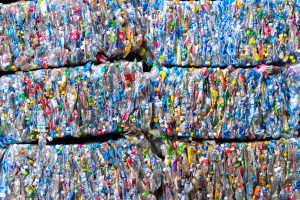WS6 Economic context
Background: Robust discussion of plastics recycling has occurred for nearly 50 years, yet only about 10% of plastics are recycled. Most analyses compare the cost of recycled plastics to those from virgin material, but outside of the contextual pressures of country or global scale economic growth, which has thus far occurred without plastics recycling. This workstream focuses on the Economic Context and integrating data and sub-models from WS2–WS5 into a macroeconomic context, which is explored by building a systems-based dynamic macroeconomic model to understand the impact of a circular economy for plastics. Robust discussion of plastics recycling has occurred for nearly 50 years, yet only about 10% of plastics are recycled. Most analyses compare the cost of recycled plastics to those from virgin material, but outside of the contextual pressures of country or global scale economic growth, which has thus far occurred without plastics recycling.
Proposal: This workstream creates a high-level macroeconomic model of how the plastics supply chain, including recycling and capturing of GHG emissions (e.g. from industrial facilities) integrates within a large economy. The purpose is to model the dynamics and feedbacks of carbon mitigation efforts, including petrochemical production and recycling to explore feedbacks from a circular economy. Information from WS3–5 will be applied in a macroeconomic model for the United States and serve as a template for other economic regions. This US model will be informative as the U.S. economy is large and complex, with few imports of energy and petrochemical feedstocks.
Methodology: Our macroeconomic model takes a systems approach to address the root causes of climate change (and lack of plastics recycling) by explicitly linking the physical nature of the economy to its monetary interpretations. Our approach is similar to system dynamics approaches, such as in The Limits to Growth studies, but with an important additional feature: the tracking of money to better enable policy-relevant conversations about the interplay of economic growth, debt, and wages (or income). King has demonstrated this framework via his HARMONEY (Human and Resources with MONEY) model that links physical system modelling with full stock-flow consistent economic accounting as used in post-Keynesian approaches. This approach ensures consistent accounting of conservation of flows for mass (natural resources and goods) and money. This ‘heterodox’ economic approach to studying the physical nature of the economy, and its emissions, is required because orthodox economic models ignore the dynamics, debt, and physical basis of the economy, and are incapable of interpreting the physical and debt-based constraints and feedbacks that pervade modern economies.
Deliverables: Two journal papers, and an open source macroeconomic model that other researchers and analysts can build upon for modelling the macroeconomic feedbacks associated with other natural resource supply chain, extraction, end-of-life treatment and recycling activities.





